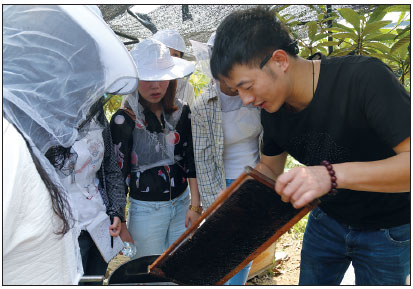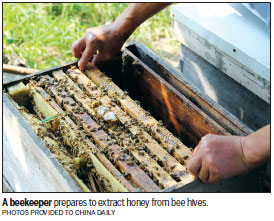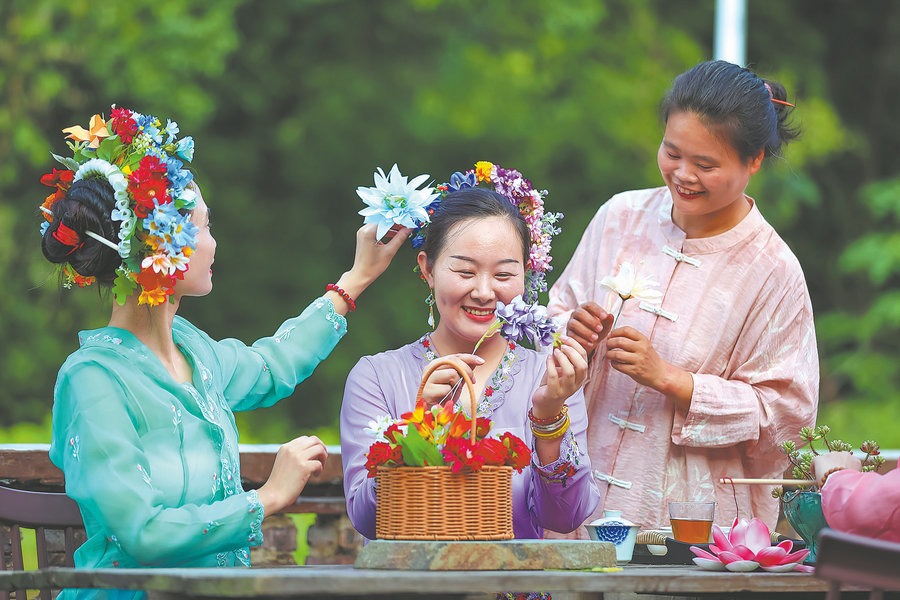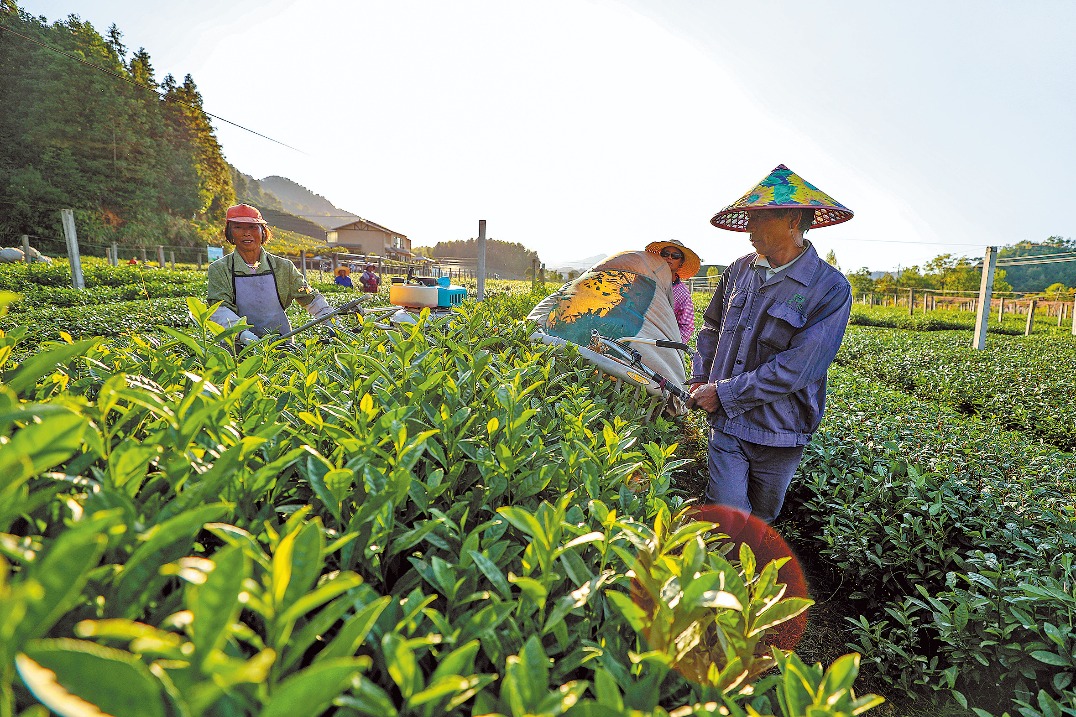Infusing food with the sweet scent of autumn

Ma Youxiang performs his job at a very slow pace. But no one's complaining because, ironically, his languid movements are the most efficient and safe way of doing what he does.
"Bees don't like noise or disturbance. They become aggressive mostly because they are annoyed by human beings," said the 59-year-old.
Ma has been a beekeeper for almost 40 years and he has gotten stung so many times that his skin no longer swells after an irate bee decides to sink its barbed stinger into his flesh.
He keeps about 60 boxes of bees at a mountainous farm in Suzhou, East China's Jiangsu province. Each box contains between 10,000 to 40,000 bees that produce around 50 kilograms of honey each season.

At Ma's hometown of Xishan, the bees gather nectar from loquat flowers which bloom in autumn and the extracted honey is sold at prices ranging from 40 to 100 yuan ($6 to 15) per kg. The price is largely dependent on factors that could affect the productivity of the bees, such as rainfall and sunshine.
Dozens of kilometers away from Ma's farm, chef Zhao Bangyin from Shang Palace, the Chinese restaurant in Shangri-La Suzhou, is busy blending this honey with freshly picked osmanthus flowers. The end product is known as osmanthus-scented honey, or osmanthus syrup.
Honey made from the nectar of osmanthus flowers is available on the market but it is difficult to procure because there is a low supply.
According to Ma, honey that doesn't have too strong a flavor or scent that could overwhelm the elegant scent of the flower is used to create osmanthus syrup, a popular ingredient that almost all housewives in the area stock in their kitchens.
In Qidu, a rural town in Suzhou that borders the neighboring province of Zhejiang, it is a tradition for grey-haired grannies to make osmanthus syrup at the beginning of each autumn before infusing it in tea or using it as a dessert dressing. The syrup is used primarily to treat children and distinguished guests.
The osmanthus, known for having a delicate, elegant scent, is a popular flower that is often used in Chinese cuisine. Of the many hybrids listed, about 80 percent are native to the southern regions of China, with some appearing in Southeast Asia and a few in South Asia.
There are two variants of osmanthus in China. One has golden flowers while the other has red, and it is always the former, which is more fragrant, that makes its way to the dinner tables.
At Shangri-La Suzhou, the flower will be taking center stage on the menu this autumn. Zhao, a veteran chef with 29 years of culinary experience, is creating an entire menu of 10 dishes featuring the osmanthus.
"Osmanthus has never had a leading role on the dining table. It's always a flavoring agent," said the 44-year-old.
Zhao said that he was inspired to create this special menu because the hairy crabs, an autumn delicacy, have had a bad season this year. Heavy rainfall and drought in many parts of eastern China this summer have resulted in a low production of lean crustaceans.
"In China, autumn delicacies are characterized by their rich flavors, and people believed that this would prepare them for the harsh winter to come. That's why we have the saying 'to gain some autumn calories'," said Zhao.
"But looking at how lean the hairy crabs are this year, we will have to make up in other ways."
Apart from commonly seen dishes such as lotus roots sugared with osmanthus syrup or sticky rice balls and osmanthus in fermented rice wine, Zhao's unique menu will also feature hairy crabs that are steamed with osmanthus infused water, vegetables fried with the flower, and a bar of crystal jelly made from osmanthus syrup.
Zhao isn't the only chef who has decided to incorporate the flower into his dishes.
In Shanghai, the massively popular pop-up ice cream store Bonus Gelato will be making another appearance this autumn, this time with flavors such as osmanthus rice wine.
Located along the Bund, Le Reve, a patisserie by acclaimed French chef Pascal Molines, has made osmanthus macaroons its signature creation.
"For many Chinese, the scent of osmanthus is the definitive aroma of autumn," said Zhao.
"Though we are gradually drifting away from nature because of urbanization, following the culinary tradition of our ancestors - to eat seasonally and respect what nature gifts us - has and should be something embedded in the DNA of us Chinese."


(China Daily USA 10/07/2016 page9)
Today's Top News
- Peace or war: that is the question
- Japan-Australia security partnership not as well-intentioned as claimed
- Xi to attend BRICS leaders virtual meeting
- China initiates emergency response to flooding, typhoon in 2 provinces
- PLA condemns Canadian, Australian warships' Taiwan Strait transit
- Xi extends congratulations to plenary session of China-Russia friendship committee






























